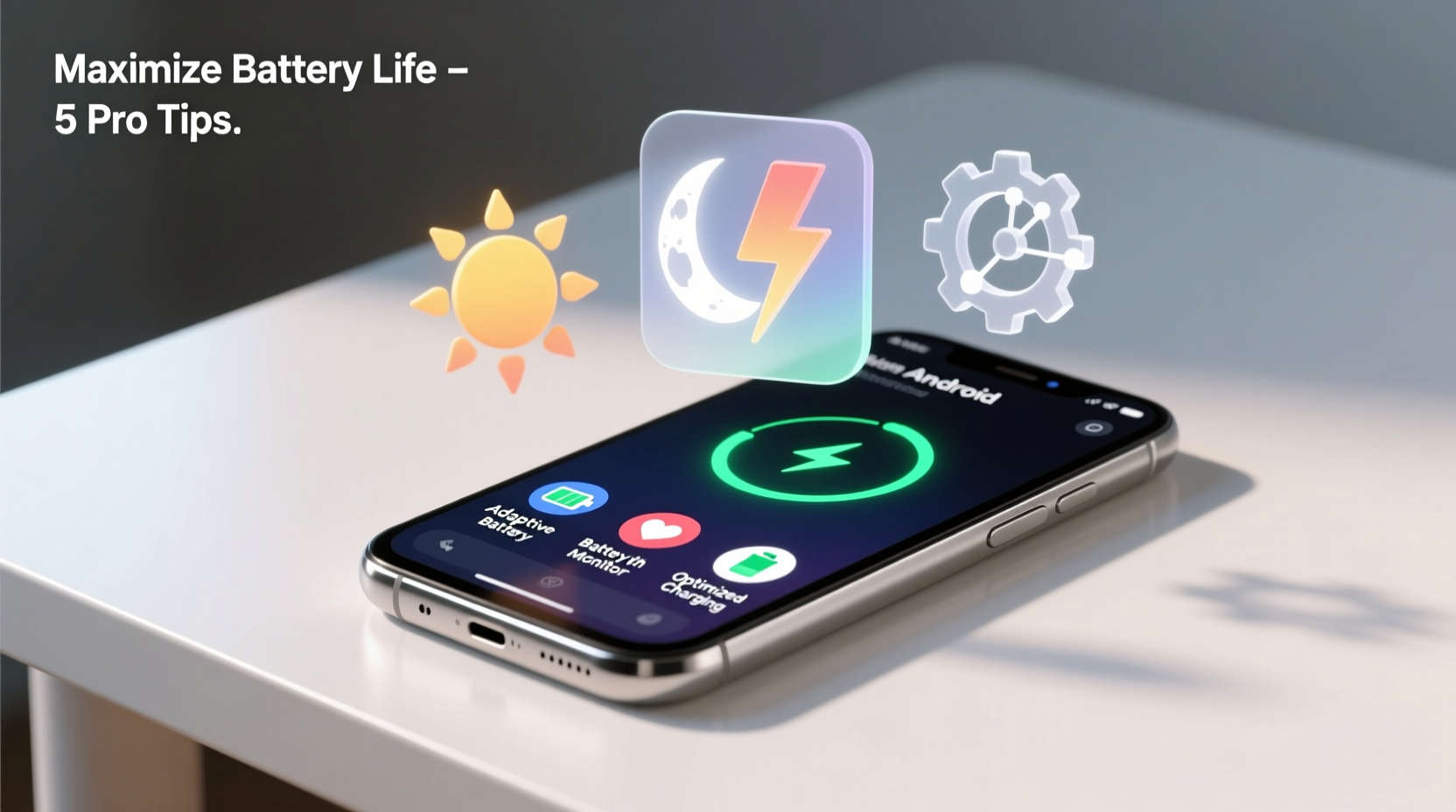Modern Android smartphones are powerful tools, but their utility hinges on one critical component: the battery. Over time, even the best batteries degrade, leading to shorter usage times, unexpected shutdowns, and reduced device reliability. While lithium-ion batteries naturally deteriorate, many users accelerate this process through poor charging habits and inefficient settings. The good news is that with informed choices, you can significantly slow battery aging, maintain peak performance, and extend your phone’s usable life by years.
Understand How Lithium-Ion Batteries Work

Lithium-ion batteries, used in nearly all Android devices, operate differently than older battery types. They don’t suffer from “memory effect,” but they are sensitive to heat, full charge cycles, and deep discharges. These batteries experience chemical degradation every time they charge or discharge, especially under extreme conditions. Battery health is measured in cycle count and capacity retention—most manufacturers design batteries to retain about 80% of their original capacity after 500 full charge cycles.
Key factors affecting longevity include:
- Heat exposure: Temperatures above 35°C (95°F) accelerate internal degradation.
- Charge level extremes: Keeping the battery at 0% or 100% for extended periods stresses the chemistry.
- Fast charging: Convenient but generates heat, contributing to wear over time.
“Battery longevity isn’t about avoiding use—it’s about managing stress. Avoiding heat and minimizing time spent at voltage extremes is the most effective way to preserve capacity.” — Dr. Lin Zhao, Battery Research Scientist, University of California, San Diego
Optimize Charging Habits for Long-Term Health
How you charge your phone has a direct impact on how long your battery lasts. Modern Android phones support adaptive charging and optimized battery charging features, but manual habits still play a crucial role.
Step-by-Step Guide to Healthy Charging
- Keep charge between 20% and 80%: This range minimizes electrochemical stress. Try to recharge before dropping below 20% and unplug before reaching 100%.
- Avoid overnight charging: If unavoidable, enable adaptive charging (available on Pixel, Samsung, and other flagship models).
- Use original or certified chargers: Cheap third-party chargers may deliver inconsistent voltage, increasing strain.
- Remove thick cases during fast charging: Heat builds up faster when charging quickly; removing insulating cases helps dissipate it.
- Charge in cool environments: Never leave your phone charging in direct sunlight or inside a hot car.
Adjust System Settings to Reduce Battery Strain
Battery performance isn’t just about chemistry—it’s also influenced by software behavior. Background apps, screen brightness, and connectivity features can dramatically increase power draw.
Key Settings to Modify
- Enable Adaptive Brightness: Let your phone adjust screen brightness based on ambient light to avoid unnecessary high-power display use.
- Reduce screen timeout: Set auto-lock to 30 seconds or 1 minute to prevent idle screen drain.
- Limit background app refresh: Go to Settings > Apps > Special Access > Background restriction and disable non-essential apps.
- Turn off Bluetooth, GPS, and Wi-Fi when not in use: These radios constantly search for signals, consuming energy.
- Use Dark Mode: On OLED screens, black pixels are turned off, reducing power consumption.
| Feature | Impact on Battery | Recommended Setting |
|---|---|---|
| Screen Brightness | High – largest single drain | Adaptive or ≤60% |
| Vibration & Haptics | Moderate | Disable for non-critical alerts |
| Auto-Sync | Low to moderate | Sync manually or limit frequency |
| Location Services | High if always on | Use only when needed |
| Live Wallpapers | Moderate | Switch to static wallpapers |
Real-World Example: Recovering Battery Life on a Two-Year-Old Device
Jamal had been experiencing rapid battery drain on his three-year-old Samsung Galaxy S21. After a full charge, the phone would drop to 40% by mid-afternoon despite moderate use. He decided to audit his habits and settings. First, he disabled background sync for social media apps and switched to manual refresh. He enabled Adaptive Battery and removed live wallpapers. He also started unplugging at 80% instead of waiting for 100%. Within a week, his morning-to-evening battery life improved by nearly 35%. While the battery had already degraded, these changes maximized what remained of its capacity and reduced daily stress.
Monthly Maintenance Checklist
To keep your Android battery performing at its best, follow this monthly routine:
- ✅ Calibrate the battery gauge: Fully discharge to 0%, then charge uninterrupted to 100%. Do this once per month to help the system accurately report battery levels.
- ✅ Review app battery usage: Check Settings > Battery to identify energy-hungry apps and restrict them if necessary.
- ✅ Update your OS and apps: Updates often include battery optimization improvements.
- ✅ Clear cache partition: Boot into recovery mode and clear cache (varies by device) to remove bloated temporary files that may cause background strain.
- ✅ Inspect charging cable and port: Clean lint from the charging port and replace frayed cables to ensure efficient power delivery.
Frequently Asked Questions
Does closing background apps save battery?
Not significantly. Android efficiently manages app states, and force-closing apps can actually use more power when relaunching. Instead, use built-in tools like Adaptive Battery to limit background activity for specific apps.
Is wireless charging bad for battery life?
Wireless charging generates more heat than wired charging, which can contribute to long-term wear. However, modern phones include thermal regulation. To minimize risk, avoid using wireless charging overnight or while playing games or watching videos.
Can I replace my battery when it degrades?
Yes. Most manufacturers offer battery replacement services for $50–$100. Replacing a worn battery often restores near-original performance and is more sustainable than upgrading devices prematurely.
Conclusion: Make Small Changes for Big Gains
Maximizing your Android battery’s performance and longevity doesn’t require technical expertise—just consistent, mindful habits. By understanding how lithium-ion batteries degrade and adjusting your charging patterns, settings, and maintenance routines, you can add months or even years to your device’s functional life. You’ll enjoy longer daily usage, fewer unexpected shutdowns, and greater value from your investment.









 浙公网安备
33010002000092号
浙公网安备
33010002000092号 浙B2-20120091-4
浙B2-20120091-4
Comments
No comments yet. Why don't you start the discussion?